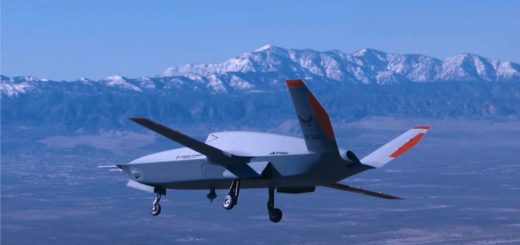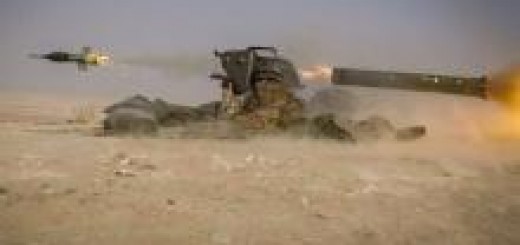Quantum, stellar, and beyond: The race to replace vulnerable GPS in aviation
AeroTime guest columnist Christian Charalambous is a pilot operating Boeing 767s on global routes and a consultant leveraging his extensive aviation and technology expertise, Christian also holds a First-Class Honours degree in Air Transport Operations plus a master’s degree in Blockchain. In his columns, he explores the modern challenges and innovative technologies that are shaping the future of flight.
The views and opinions expressed in this column are solely those of the author and do not necessarily reflect the official policy or position of AeroTime.
For decades, Global Navigation Satellite Systems (GNSS) like GPS have been the invisible backbone of modern aviation, enabling precise navigation, timing, and safety across millions of flights worldwide. As reliance on satellite signals has grown, so have their vulnerabilities. In recent years, a surge in GPS jamming and spoofing incidents, driven by both state and non-state actors, has exposed the fragility of the system, threatening flight safety and operational integrity on a global scale.
A new generation of navigation technologies is emerging, poised to render GPS not just optional, but potentially obsolete. From quantum sensors to stellar navigation, innovators like Q-CTRL and France’s Astradia are leading a technological revolution that could fundamentally reshape how aircraft find their way in the world.
The GPS vulnerability crisis
GNSS underpins everything from enroute navigation and precision approaches to air traffic management and collision avoidance. However, GPS signals, transmitted from satellites orbiting 20,000 km above, are inherently weak by the time they reach Earth. This makes them highly susceptible to interference by relatively low-power ground-based devices.
Jamming: The loud silence
GPS jamming occurs when ground-based devices intentionally transmit signals that overpower those from GNSS satellites, causing aircraft navigation systems to lose reliable position and timing information. According to Aireon’s April 2025 white paper, the scale and severity of GPS jamming has increased significantly in recent years, particularly in regions experiencing military conflict such as Eastern Europe and the Middle East. Aireon’s global, space-based ADS-B data confirms that civil aircraft are regularly exposed to jamming spillover, resulting in navigation outages and the need for pilots to revert to backup methods like Inertial Reference Systems or DME. The European Aviation Safety Agency (EASA) issued a safety bulletin in July 2024 warning of the growing operational impact of GPS interference, with some models estimating an 80% increase in GPS outage events between 2021 and 2024. Hundreds of daily flights are now affected in the most impacted regions, making GPS jamming a persistent hazard for international aviation
Spoofing: The invisible threat
Even more insidious than jamming is GPS spoofing, where counterfeit signals are broadcast to mislead aircraft receivers into calculating false positions and times. Aireon’s data and OPSGROUP estimates indicate that spoofing attacks surged by as much as 500% over the course of 2024. Spoofing incidents have been widely reported over Europe, the Baltic Sea, and the Black Sea, with Aireon’s ADS-B analytics revealing improbable flight tracks, sudden position jumps of over 20 nautical miles, and “ghost aircraft” appearing on radar. Such anomalies can create significant risks, including mid-air collision hazards and loss of situational awareness.
A particularly dangerous consequence of GPS spoofing is its impact on the Enhanced Ground Proximity Warning System (EGPWS). When an aircraft’s spoofed position erroneously indicates proximity to terrain, the EGPWS may issue false terrain warnings. This can cause a startle effect amongst pilots and can be highly disruptive, as they may instinctively initiate unnecessary evasive maneuvers, potentially compromising flight safety. In current practice, when crews suspect their aircraft is in an area where they may encounter spoofing, the recommended mitigation is to switch off the EGPWS system to avoid these false warnings, though this, in turn, removes a critical layer of terrain awareness protection.
Q-CTRL’s Quantum navigation: a new paradigm
Amid this crisis, Sydney-based Q-CTRL has pioneered a GPS-free quantum navigation system called Ironstone Opal. Leveraging the Earth’s magnetic field and quantum sensors, Ironstone Opal provides precise positioning without any reliance on satellite signals.
How it works:
Quantum magnetic anomaly detection: Ultra-sensitive quantum magnetometers detect subtle, location-specific variations in the Earth’s magnetic field, which serve as natural “fingerprints” for navigation.
AI-enhanced signal processing: Machine learning filters out noise from aircraft electronics and the environment, isolating genuine magnetic signals for accurate positioning.
Self-contained operation: Ironstone Opal operates entirely onboard, immune to jamming and spoofing, and requires no external signals.
Performance and trials
Flight tests in 2025 demonstrated 46x lower positioning error compared to traditional INS, achieving 10-meter accuracy in diverse environments. The system is compact enough for drones and small aircraft and has already secured a $1 million defense contract for further development.
Advantages:
Immunity to GPS interference: No reliance on satellites eliminates jamming/spoofing risks.
Privacy and security: Self-contained system reduces cyber vulnerabilities.
Operational resilience: Enables navigation in GPS-denied environments, including polar regions and conflict zones.
Astradia: Stellar navigation makes GPS “officially obsolete”
While quantum navigation has captured headlines, a French start-up is now making global waves with a radically different approach. Astradia, developed by Sodern (a subsidiary of ArianeGroup), is the world’s first daytime star tracker for aviation navigation, hailed as “revolutionary” and “the first system to render GPS officially obsolete”.
How Astradia works:
Astradia leverages stellar navigation technology, using a star tracker to determine precise position and orientation by referencing the fixed positions of stars. Unlike GPS, which relies on vulnerable radio signals, Astradia is immune to jamming and spoofing.
Day and night operation: Advanced optics and algorithms allow Astradia to function in all lighting conditions, extending stellar navigation beyond its traditional nighttime limits.
No reliance on radio signals: Because it uses celestial objects, Astradia is unaffected by electromagnetic interference, jamming, or spoofing.
Aerospace-grade precision: Developed with space industry heritage, Astradia offers accuracy suitable for both civilian and military aviation.
Aviation implications
Astradia’s independence from all radio-frequency signals means it can serve as a robust backup, or even a primary navigation source, in environments where GPS is denied or unreliable. Its commercial launch in May 2025, timed for the Paris Air Show, signals a paradigm shift in navigation technology.
Competing technologies and industry responses
Aireon’s space-based monitoring
Aireon’s GPS Interference Metric uses a network of 66 low-Earth orbit satellites to detect jamming and spoofing in real time. While it doesn’t replace GPS, it provides critical situational awareness for air traffic controllers and airlines, helping them respond quickly to disruptions.
Safran’s anti-jamming and anti-spoofing filters
Safran Aerospace integrates multi-constellation GNSS receivers with inertial measurement units and cryptographic verification to filter out spoofed signals. While effective against basic attacks, sophisticated spoofers can still bypass these defenses, highlighting the need for more fundamental solutions.
The EU’s multi-technology PNT initiative
The European Union’s 2025 Positioning, Navigation, and Timing (PNT) program tests multiple technologies to reduce GPS dependence, including quantum timing, enhanced LORAN (eLORAN), and optical ground systems. This diversified approach reflects the complexity of replacing GPS and the absence of a single silver bullet.
Technical and adoption challenges
Sensor miniaturization and integration
Quantum magnetometers typically require cryogenic cooling, posing challenges for aircraft integration. Q-CTRL’s partnership with Advanced Navigation aims to develop shoebox-sized, portable quantum sensors by 2027.
Geomagnetic map resolution
Current geomagnetic maps have resolutions around 50 km, insufficient for precision approaches. Q-CTRL uses AI to generate hyperlocal magnetic maps, but widespread adoption will require extensive flight data collection.
Regulatory certification
No quantum or stellar navigation system has yet received certification from major aviation authorities. The UK’s 2025 quantum navigation trials on Royal Navy vessels mark early regulatory engagement, but broader certification remains a multi-year process.
The future: Hybrid systems and global navigation resilience
Industry experts foresee a hybrid navigation future combining:
Quantum navigation for GPS-denied environments
Stellar navigation as a radio-signal-independent backup
AI-driven spoofing detection to flag anomalies in real time
Multi-sensor fusion integrating GNSS, INS, quantum sensors, and RF geolocation
For example, Spire’s Radio Frequency Geolocation (RFGL) system uses satellite triangulation to independently verify aircraft positions. Similarly, APG’s NaviGuard employs machine learning to detect spoofing patterns in real time.
As the United Nations and aviation safety agencies express “grave concern” over the increasing incidents of interference affecting global navigation infrastructure, the race intensifies between quantum innovators like Q-CTRL, stellar pioneers like Astradia, and evolving spoofing technologies. The industry’s survival may hinge on rendering GPS optional rather than essential.
Navigating the next era
The vulnerabilities of GPS have become a critical aviation security challenge, with jamming and spoofing incidents escalating rapidly worldwide. Traditional backups like Inertial Navigation are insufficient for the demands of modern aviation, especially in contested or remote environments.
Q-CTRL’s quantum navigation and Astradia’s stellar navigation represent groundbreaking steps toward a GPS-independent future, offering unparalleled accuracy and resilience. However, significant technical, regulatory, and operational hurdles remain before widespread adoption. Complementary technologies from Aireon, Safran, and EU initiatives underscore that no single solution will suffice. Instead, a layered, hybrid approach is emerging as the path forward.
As the aviation industry navigates this complex transition, the ultimate goal is clear: to ensure safe, reliable, and secure navigation for all aircraft, even in the face of sophisticated interference and geopolitical instability. The quantum and stellar revolutions in navigation may well be the key to unlocking that future. The post Quantum, stellar, and beyond: The race to replace vulnerable GPS in aviation appeared first on AeroTime.
AeroTime guest columnist Christian Charalambous is a pilot operating Boeing 767s on global routes and a consultant leveraging…
The post Quantum, stellar, and beyond: The race to replace vulnerable GPS in aviation appeared first on AeroTime.






